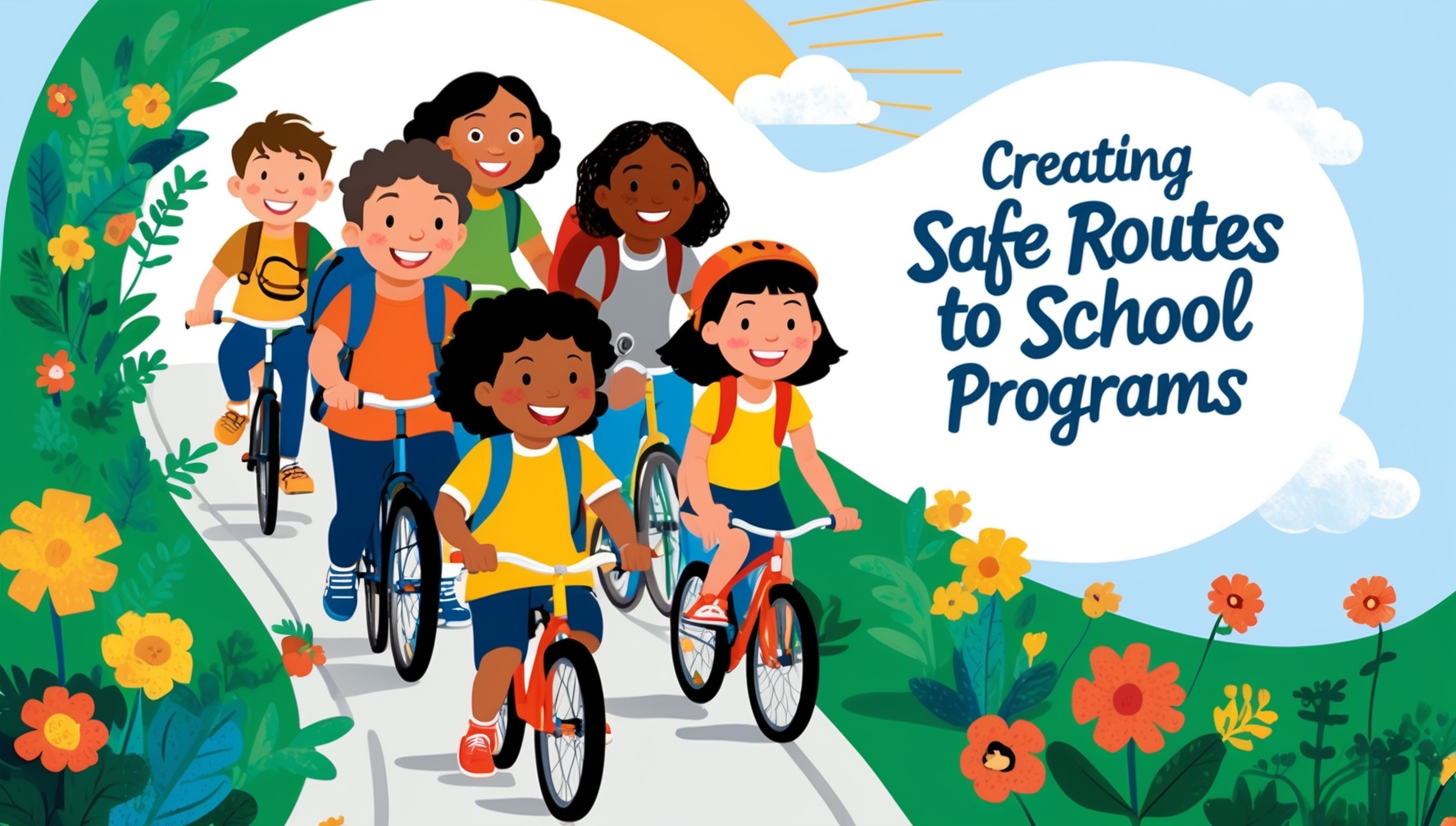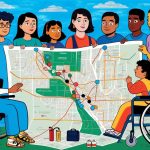Safe Routes to School (SRTS) programs are vital for ensuring that children can travel to and from school safely. These programs aim to promote walking and biking to school while improving safety and reducing traffic-related accidents. Here’s a step-by-step guide on how to create and implement a successful Safe Routes to School program in your community.
1. Assess the Current Situation
Conduct a Safety Audit: Begin by evaluating the current safety conditions around the school. This includes identifying potential hazards such as traffic congestion, poorly maintained sidewalks, and unsafe crossings.
Gather Data: Collect data on current travel patterns, including how many students walk, bike, or are driven to school. Survey parents, students, and school staff to understand their concerns and preferences regarding school commutes.
Identify Barriers: Determine barriers to walking or biking, such as lack of sidewalks, unsafe intersections, or high traffic volumes. Address these issues to improve safety and accessibility.
2. Form a Committee
Assemble a Team: Create a committee that includes school administrators, local government officials, law enforcement, parents, and community members. Consider including representatives from the neighborhood watch program to provide additional safety insights and support. This team will lead the development and implementation of the program.
Define Roles: Assign specific roles and responsibilities to committee members. This may include overseeing safety assessments, organizing community outreach, and coordinating with local authorities.
3. Develop a Plan
Set Goals: Establish clear, measurable goals for the Safe Routes to School program. Goals might include increasing the number of students walking or biking to school, reducing traffic congestion, or improving safety at specific intersections.
Create a Strategy: Develop a comprehensive strategy that includes infrastructure improvements, educational programs, and community engagement initiatives. Ensure that the plan addresses the identified barriers and safety concerns.
Budget and Resources: Identify potential funding sources for the program, including grants, donations, and government funding. Create a budget that outlines costs for infrastructure improvements, educational materials, and program management.
4. Implement Infrastructure Improvements
Upgrade Sidewalks and Crossings: Improve sidewalks, crosswalks, and bike lanes to ensure safe and accessible routes. Install traffic signals, pedestrian signs, and other safety features at critical points.
Enhance Visibility: Increase visibility at crossings and along routes with better lighting, clearer road markings, and reflective signage. Ensure that all safety features are well-maintained.
Create Safe Drop-Off Zones: Designate safe drop-off and pick-up areas to reduce congestion and improve safety around the school. Implement measures to manage traffic flow and minimize the risk of accidents.
5. Educate and Engage the Community
Organize Awareness Campaigns: Conduct awareness campaigns to inform parents, students, and community members about the Safe Routes to School program. Use flyers, social media, and school newsletters to spread the word.
Promote Walking and Biking: Encourage students to walk or bike to school through incentive programs, safety workshops, and special events like “Walk to School Day.” Highlight the benefits of walking and biking, such as health, environment, and cost savings.
Offer Safety Training: Provide safety training for students, parents, and school staff. This may include pedestrian and bicycle safety classes, driver awareness programs, and first aid and CPR training. Ensuring everyone is equipped with essential emergency response skills can greatly enhance the overall safety of the school commute.
6. Monitor and Evaluate the Program
Track Progress: Regularly monitor the program’s progress towards its goals. Collect data on participation rates, safety incidents, and community feedback.
Evaluate Effectiveness: Assess the effectiveness of the program by reviewing safety improvements, changes in travel patterns, and overall satisfaction. Identify any issues or areas for improvement.
Adjust and Improve: Use evaluation results to make necessary adjustments to the program. Continuously refine strategies, address emerging challenges, and enhance program elements based on feedback and data.
7. Foster Ongoing Support and Collaboration
Build Partnerships: Continue to build and strengthen partnerships with local organizations, businesses, and government agencies. Collaborative efforts can provide additional resources and support for the program.
Engage Stakeholders: Maintain regular communication with stakeholders, including parents, students, and community leaders. Keep them informed about program updates, successes, and opportunities for involvement.
Celebrate Successes: Recognize and celebrate the achievements of the Safe Routes to School program. Highlight success stories, milestones, and improvements to maintain enthusiasm and support.
Conclusion
Creating a Safe Routes to School program involves careful planning, community involvement, and ongoing evaluation. By addressing safety concerns, improving infrastructure, and promoting active transportation, you can enhance the safety and well-being of students traveling to and from school.






